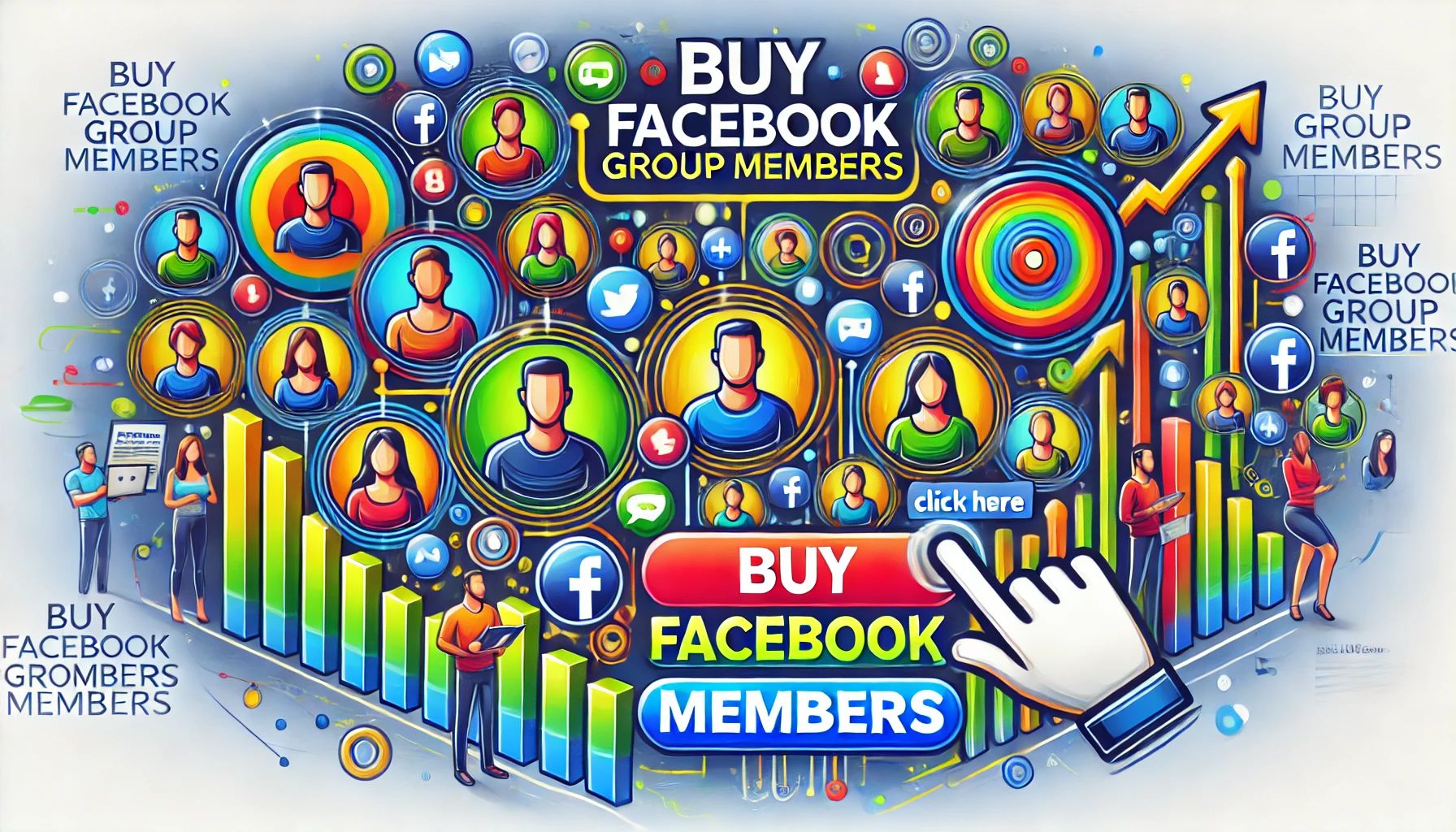The Ultimate Guide to Getting Facebook Group Members for Free
Facebook groups are a powerful way to build a community, drive engagement, and promote your brand. Whether you’re growing a group for business, networking, or personal interests, increasing your group members can boost visibility and activity. The best part? You don’t need to spend money to grow your group. In this comprehensive guide, we’ll explore proven strategies to get Facebook group members for free.
Why Growing Your Facebook Group Matters
Facebook groups create a sense of community and foster direct interaction between you and your audience. With high engagement rates compared to pages, groups offer unique advantages:
- Direct Communication: Groups allow two-way conversations with your audience.
- Brand Loyalty: A strong group can build trust and loyalty over time.
- Algorithm Advantage: Facebook prioritizes group content, increasing organic reach.
- Lead Generation: Groups can drive leads and conversions by fostering trust and providing value.
Step 1: Create an Optimized Facebook Group
The first step to growing a successful Facebook group is optimizing it for discoverability and engagement.
1.1 Choose a Niche and Name with SEO in Mind
Pick a niche that aligns with your goals. Use keywords in your group name that people are searching for. For example, if you’re creating a group about fitness, “Home Fitness Tips & Workouts” is better than “John’s Fitness Group.”
1.2 Write a Keyword-Rich Description
Use relevant keywords in your group description. Clearly explain the group’s purpose and who it’s for. Keywords help your group appear in Facebook search results.
1.3 Customize Your Group Settings
- Privacy Settings: Public groups attract more members, but private groups build exclusivity.
- Tags: Use Facebook’s tag feature to add relevant categories to your group.
- Cover Photo: Use an eye-catching image that reflects your group’s topic.
Step 2: Promote Your Facebook Group Organically
2.1 Leverage Personal and Business Pages
Share your group on your personal profile and any business pages you manage. Regularly post about the group and highlight the value of joining.
2.2 Use Other Social Media Platforms
Cross-promote your Facebook group on Instagram, Twitter, LinkedIn, TikTok, and Pinterest. Create engaging posts that encourage people to join.
2.3 Engage in Other Facebook Groups
Join other groups within your niche and actively participate. When appropriate, mention your group or share valuable content that links back to your group.
2.4 Email List Promotion
If you have an email list, send out an announcement inviting subscribers to join your group. Include the benefits of joining and a direct link.
2.5 Add to Your Website
Embed a “Join Our Facebook Group” button on your website or blog. Write articles related to your niche and encourage readers to join your group for more discussion.
Step 3: Create Engaging Content
3.1 Post Consistently
Consistency is key to group growth. Create a content calendar and post regularly. Use polls, questions, and engaging visuals to keep members interested.
3.2 Use Live Videos
Go live in your group regularly to engage with members in real-time. Facebook prioritizes live content, boosting visibility.
3.3 Encourage User-Generated Content
Ask members to share their own experiences, tips, and stories. User-generated content drives engagement and helps your group grow organically.
3.4 Run Challenges and Giveaways
Organize fun challenges or giveaways exclusively for group members. This can increase engagement and encourage new people to join.
Step 4: Optimize for Facebook’s Algorithm
4.1 Encourage Engagement
Facebook rewards engagement. Ask questions, spark discussions, and reply to comments quickly. The more interaction your group has, the more it will be recommended to others.
4.2 Use Keywords in Posts
Include relevant keywords in your posts and discussions to make your group appear in search results more frequently.
4.3 Tag Members in Posts
Tag active members in posts to encourage participation. Acknowledging members creates a sense of belonging.
Step 5: Collaborate and Network
5.1 Partner with Influencers
Collaborate with influencers or other group admins within your niche. Ask them to promote your group in exchange for mutual promotion.
5.2 Host Joint Events
Host joint webinars, live events, or Q&A sessions with other groups. Promote these events across both groups to drive member growth.
Step 6: Use Facebook’s Features
6.1 Pin Important Posts
Pin welcome posts or key announcements to the top of your group. This ensures new members see important information right away.
6.2 Create Units and Guides
Use the “Guides” feature to organize content. This makes it easier for members to find valuable posts and stay engaged.
Step 7: Monitor and Adjust
7.1 Analyze Insights
Regularly check Facebook Group Insights to track member growth and engagement. Adjust your strategy based on what’s working.
7.2 Ask for Feedback
Engage with members and ask for feedback on how to improve the group. Implementing suggestions makes members feel valued.
Conclusion
Growing a Facebook group doesn’t have to cost money. By optimizing your group, promoting across platforms, creating engaging content, and leveraging Facebook’s tools, you can build a thriving community organically. Start implementing these strategies today, and watch your group membership grow!






